Tetovo is such a hidden treasure of Macedonia. A treasure that few people know about, but maybe that’s a good thing, because it allows you to have the magical Painted Mosque all to yourself for a while. Yes, you do come to Tetovo for one place, and that is the fabulously colourful mosque.
Let me tell you, although Lake Ohrid is the most famous tourist destination in Macedonia, if I had to name one most beautiful place in the country, it would be the Painted Mosque in Tetovo.
I admit that I’ve seen a lot in my life, and the mosques in Iran’s Isfahan or fairytale Shiraz can be impressive. In the same way, the oversized ceiling in Uzbekistan’s Registan left me with my mouth literally and figuratively open.
However, what I would see in a rather small city in Macedonia, I was not prepared for!
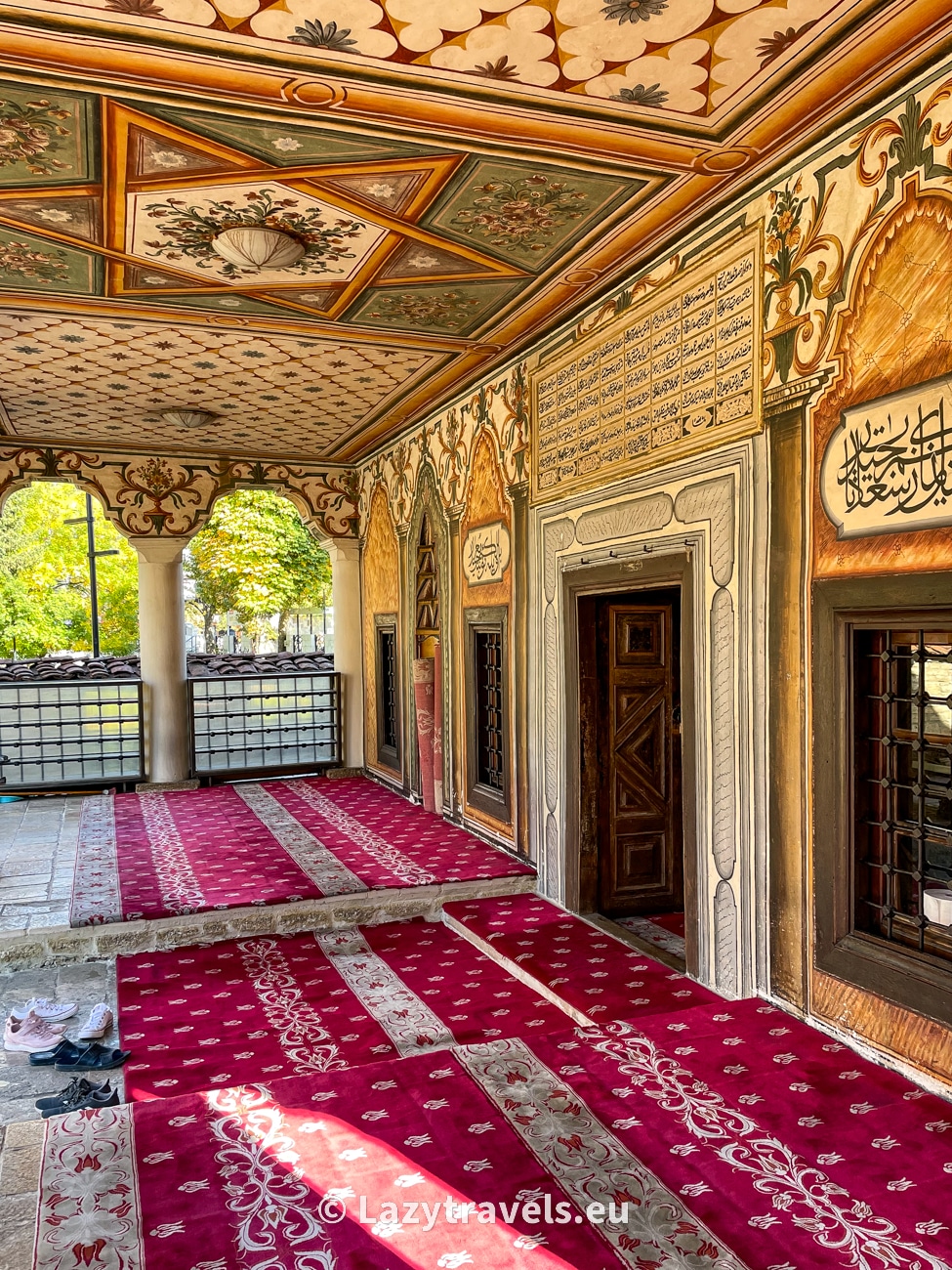
The Painted Mosque in Tetovo
Most of the colourful tourist brochures showing North Macedonia’s top attractions choose the view of Ohrid or Lake Ohrid for their cover photos. And after having been to Tetovo, I don’t understand this at all. Because this little mosque is so fine and photogenic that, properly shown, it would draw crowds here.
But fortunately for the mosque and the local Muslim community, this is not the case. The mosque is off the main tourist routes. It is either visited by organised tours when they are passing through, or by individual tourists (but only a few)

Mostly, however, locals come to pray. Because it is not some kind of tourist attraction, but a normally functioning mosque. The only difference, perhaps, is that a gentleman walks around it, keeping it tidy and collecting even the smallest particles of dust from the carpet.
Visiting the Painted Mosque in Tetovo
The mosque seems like it has been pulled out of a pack of cards. And this is not at all figurative. He looks as if his outer walls have been covered with playing cards. Beautiful, rectangular and symmetrical patterns cover almost every bit of the walls. So, as you can see, the first impression already promises to be spectacular. But for what will be inside, I was not prepared.
When I entered the inner courtyard, the contrast between the traditional Balkan shabbiness and disorder and the perfect cleanliness was immediately striking. Here the lawn is lusciously green, there is not a single piece of paper, litter or anything that doesn’t belong. Instead, there are colourful flowers that complete the atmosphere.
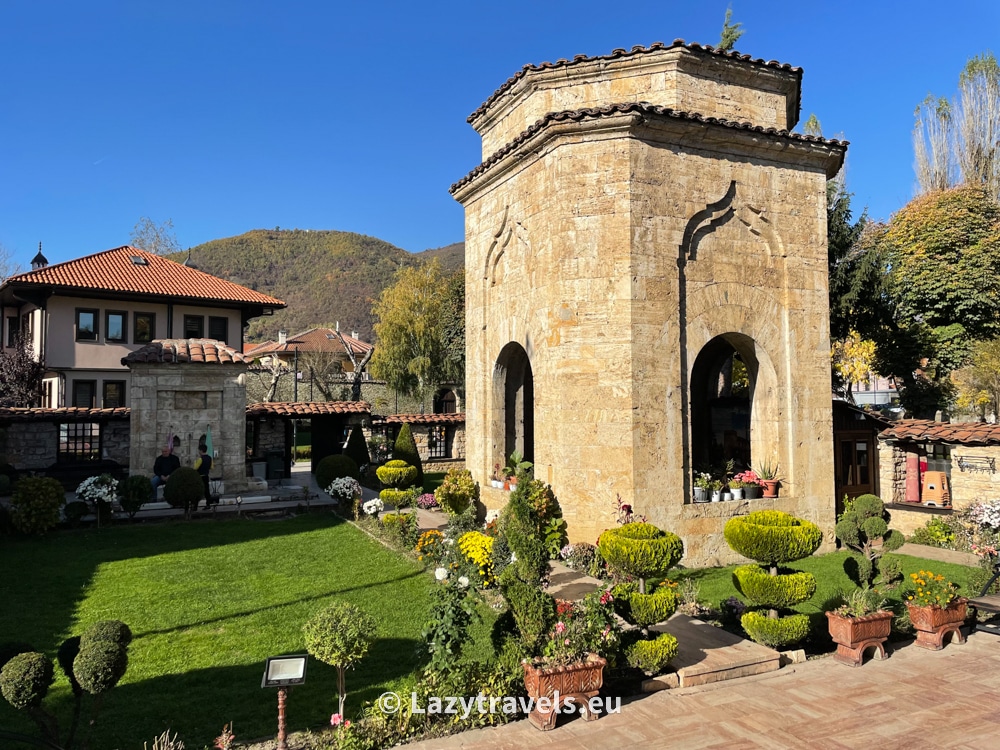
And before you go inside, also turn your attention to the shape of the mosque. These types of places usually have a dome. It’s different here, as the tile is more reminiscent to me of the roofing of a traditional Ottoman house.
The interior of the Painted Mosque
And the above is only a first impression, which only partly prepares you for the not-too-distant future. Because, after all, the heart of the mosque is its interior. So I pull off my shoes and, bending my head, walk through the low door into the interior.
When I lift it, I am already in another world. Now you simply have to pick your jaw up off the floor and start admiring this marvel of Islamic architecture. The intimate interior is a shrine, but it is so beautifully decorated and designed that it might as well be a ballroom in a very opulent palace. And there is no exaggeration in what I write!
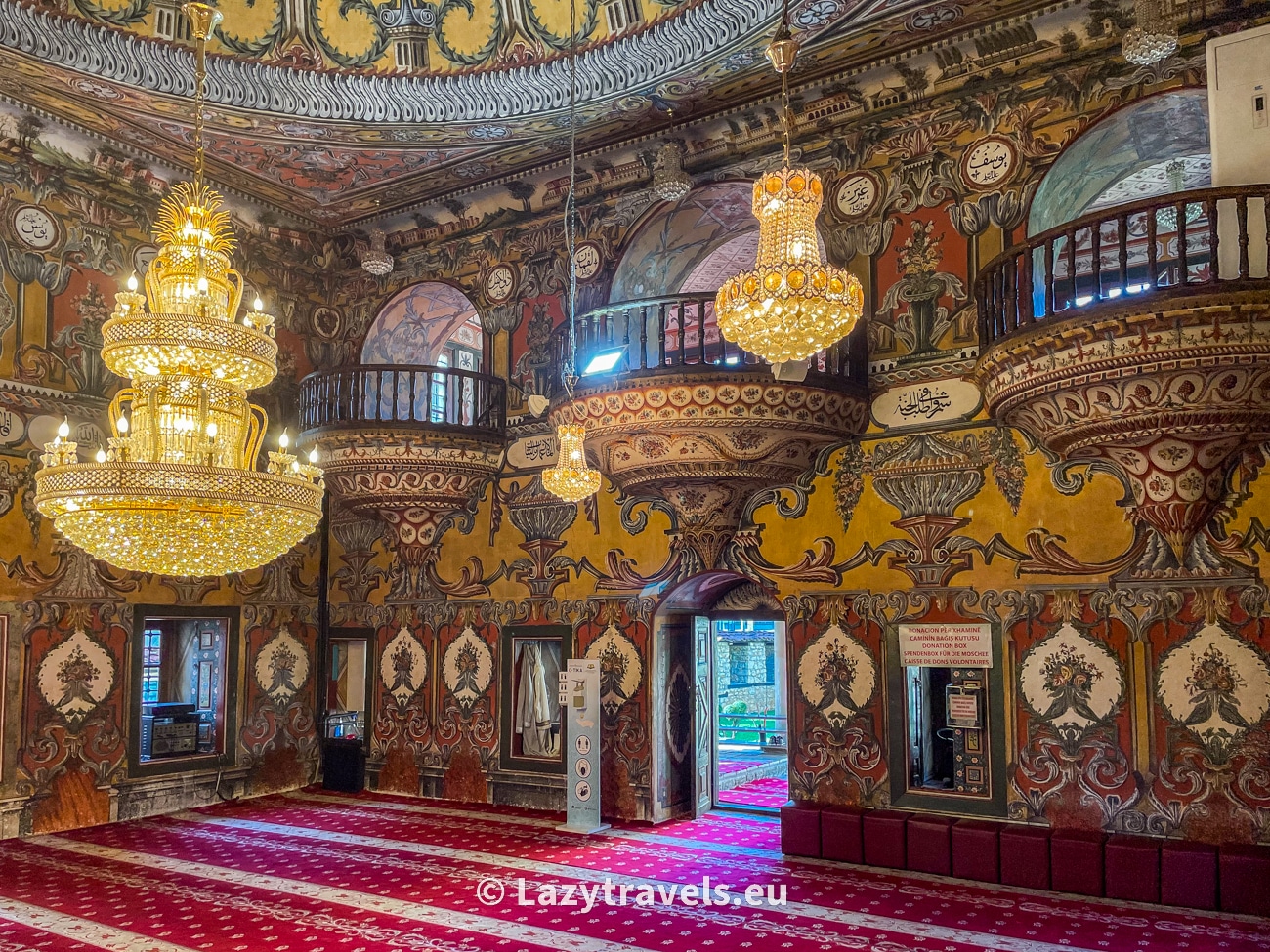
First of all, the walls: the entire interior of the temple is decorated with patterns. But unlike other mosques, here there are not only geometric patterns, but also landscapes and buildings! I didn’t see such decorations anywhere in the world when I looked at mosques. I probably haven’t seen much, but this is unique and impressive. So in addition to the plants, there are whole complexes of buildings painted. Of particular note is the fact that among the decorations there are also views of Mecca.
The name Painted Mosque is absolutely not an exaggeration!

Another thing that is more befitting of a palace than a mosque are the three balconies on the entrance wall. My associations here were clear: from them an orchestra could play for those playing below. And this is, after all, a house of prayer, not play!
And the icing on the cake is the chandelier. Few palaces have one as beautiful as the one that hangs from the ceiling in the Tetovo mosque. Illuminated by thousands of crystals, it mesmerises, but at the same time blends in perfectly with the rest of the, richly decorated interior!
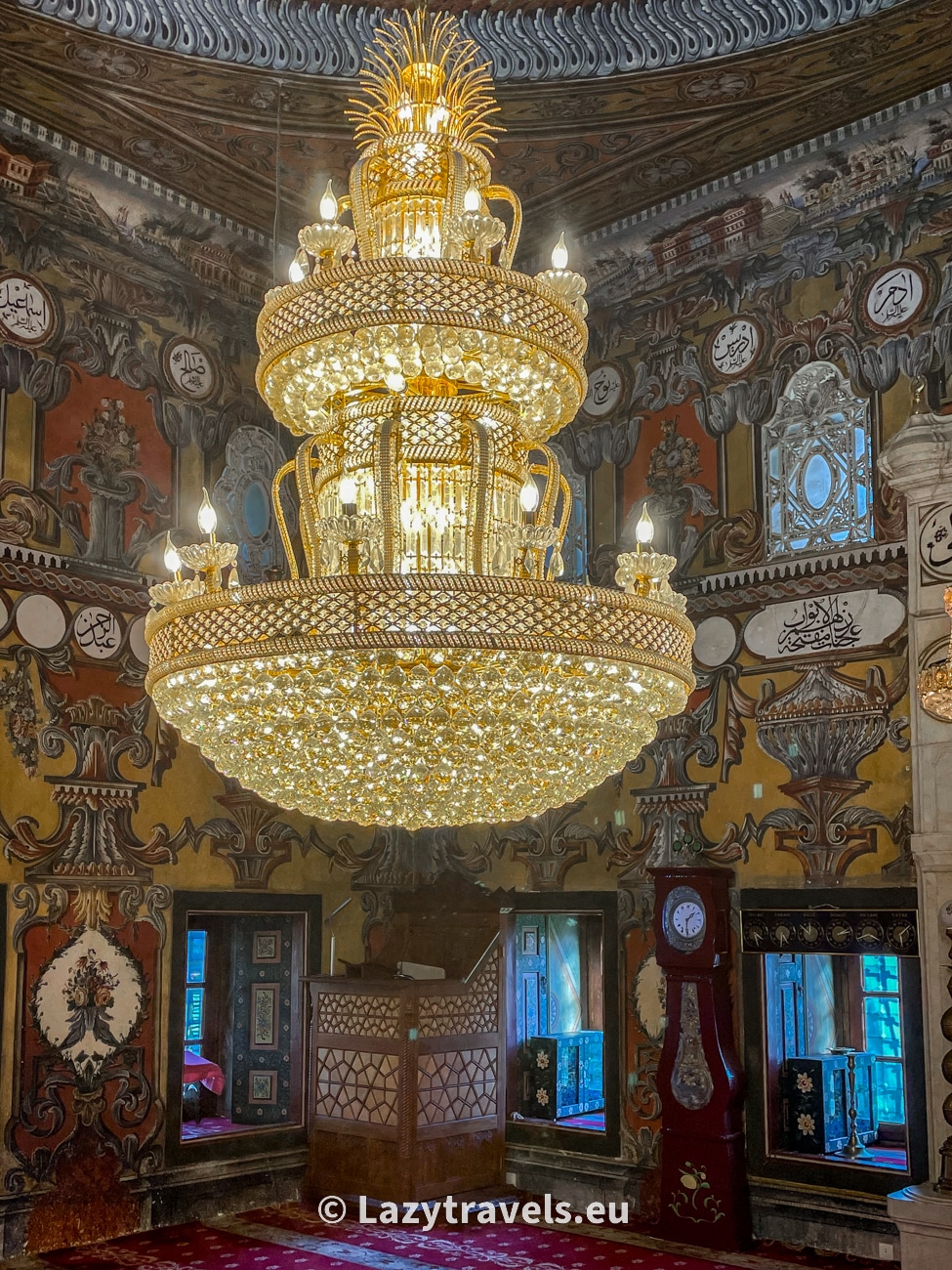
But since this place is an active temple, the traditional elements of mosque design and furnishings must also be here. That’s why we have here, first of all, the beautifully decorated mihrab, which is the niche in the wall that points to Mecca. It is towards it that Muslims always pray. Right next to it stands the minbar or pulpit. It is from here that the cleric delivers the chatuba or, in the Islamic faith, the sermon.
I must admit that I was sad to leave this interior. Because beauty leaves very reluctantly!
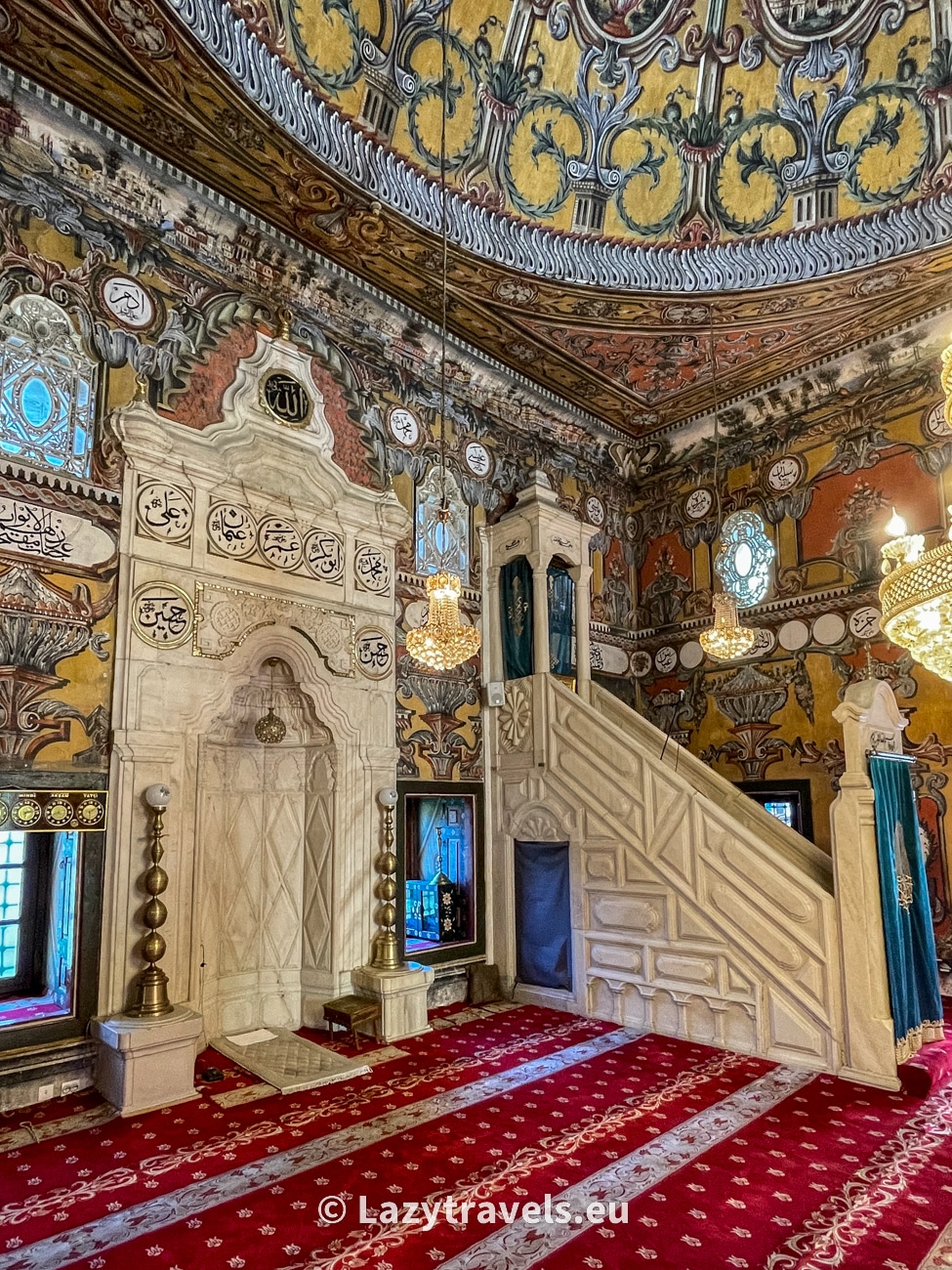
The Painted Mosque (Šarena Džamija) – short history
Finally, a bit of history about the mosque. Its walls are very old, as the temple was built in 1438. And this is significant in that it was built before the walls of Constantinople fell down. Why is this significant? Because after Byzantium fell, Islam adopted the domes with which the majestic, most magnificent temple in the world at the time stands out: the Haga Sophia.
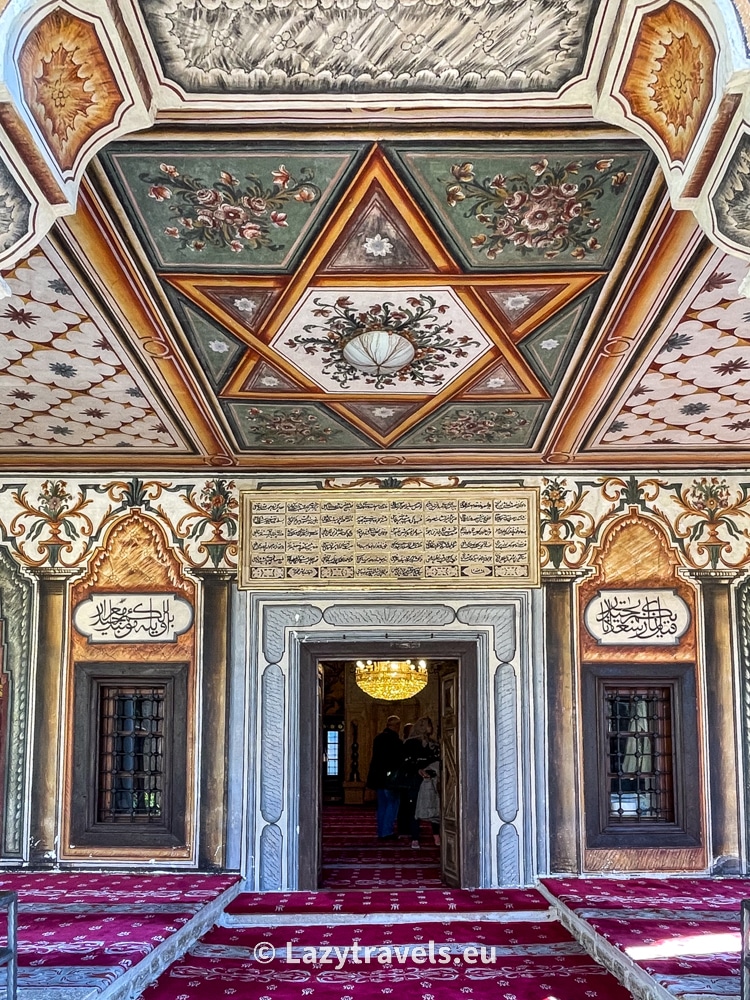
In Tetovo, the temple building is covered with tile, so characteristic for this the region. Another distinctive point is that while most mosques were founded by the mighty of the world at the time, with the sultans at the head, the temple in Tetovo was founded by two sisters. The tombs of Hurshida and Mensure are located in a stone turbe that stands in the garden right next to the mosque. You can see it in the picture above.

Finally, it is still worth mentioning that today’s delight in the decorations of the Painted Mosque would not be possible if it were not for the renovation of 1833. After the earthquake, it was commissioned by Abdurrahman Pasha and it is thanks to this sponsor that these rich decorations were created. Tens of thousands of chicken eggs were used in their creation to make them more durable, as legend has it. As you can see, it was a good investment, as the colours and paintings in the Tetovo mosque are still pleasing today.
On the other side of the Pena River stands a sizable stone building. It is a hamam or Turkish bath dating from the 16th century. Nowadays it is an art gallery and I admit that I did not go inside. But from the outside it looks very beautiful, especially if it is autumn and the colours of the leaves add to the allure.
Arabati Baba Tekke Monastery
A less spectacular building, or rather a complex of buildings, is Arabati Baba Tekke. The monastery is located about 1 200 metres from the biggest Tetovo attraction described above.
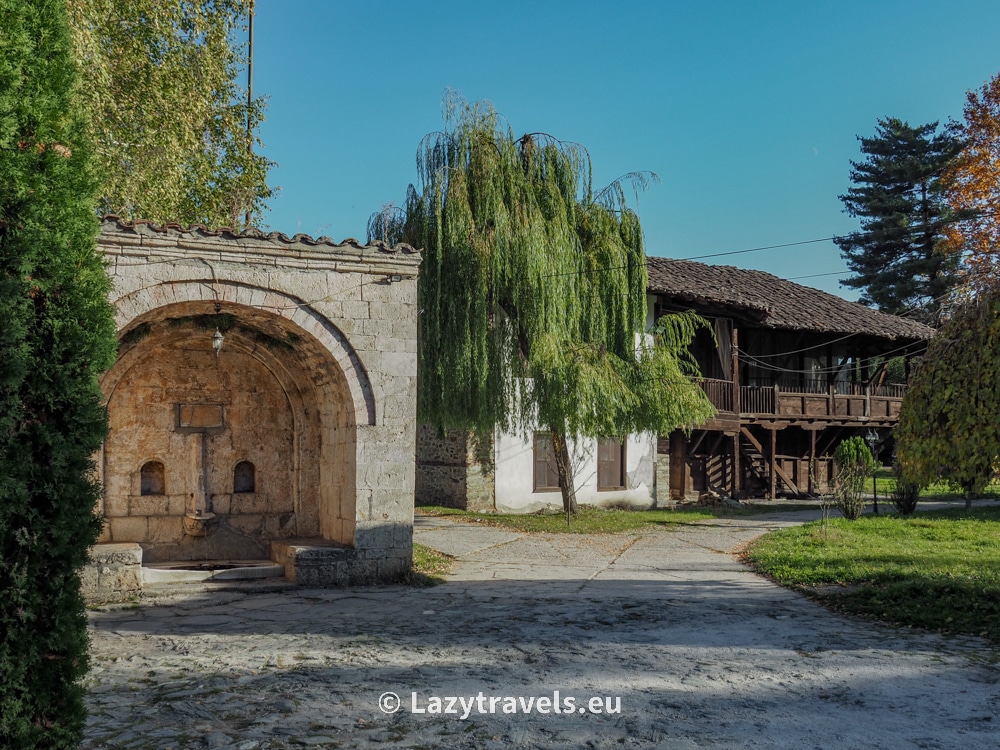
According to legend, the place came into being because Ali Baba, an important official in the state of Suleiman the Magnificent, received revelations and decided to change his life. He abandoned comfort and service to the sultan in favour of being a humble Bektashi monk. He settled right here in Tetovo, which is almost at the end of the world. But the complex we can see is said to be due to the only disciple who survived Ali Baba. This was Arbati Baba, and it was he who founded the monastery in Tetovo to honour the memory of his master and so that his teachings would not be lost. However, the current buildings were built at the end of the 18th century.
After the Ottomans were expelled from Tetovo in 1912, the most glorious history of this monastery also came to an end. Under Yugoslavia, the monastery complex was secularised and a hotel, restaurant and disco operated here.
Today, however, the monks have returned here again and the place has a more religious character. When I came here, the mosque was in prayer, so I could not enter. But I did take photos, as the wooden buildings are crying out for renovation, but are still charmingly beautiful.
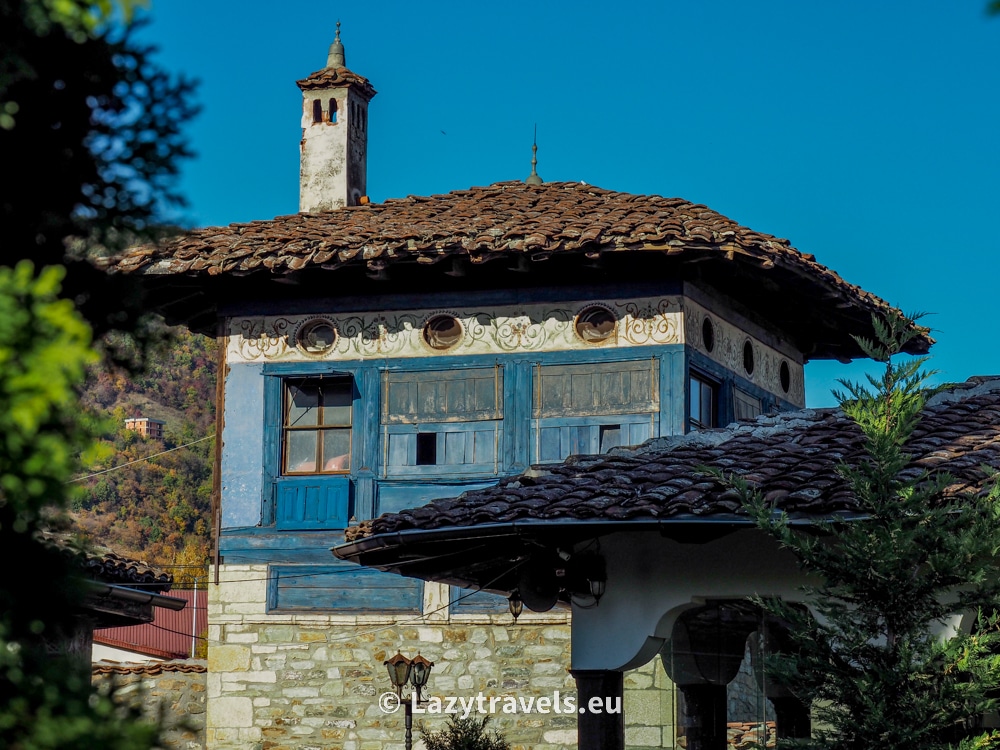
Tetovo – is it worth it?
I admit that I don’t really know why I haven’t yet visited Tetovo during my several trips to Macedonia to see its attractions. Because for me, it is one of the places with the most beautiful attractions of the country. The Painted Mosque is really impressive, and while I thought the mosque in Travnik in Bosnia was unusual and noteworthy, the one here simply captivates a certain part of the body. If I were to come for just one place in North Macedonia, it would be Tetovo and this Painted Mosque! And let that be a recommendation for you.
If you are wondering how much time to plan to visit Tetovo, I would indicate about three hours.
In that time you will have visited everything and had a coffee. I would recommend to you probably the most popular café in town, the Mulliri Vjeter about 100 metres from the mosque. Here, on tables on the grass by the river, the coffee tastes delicious.
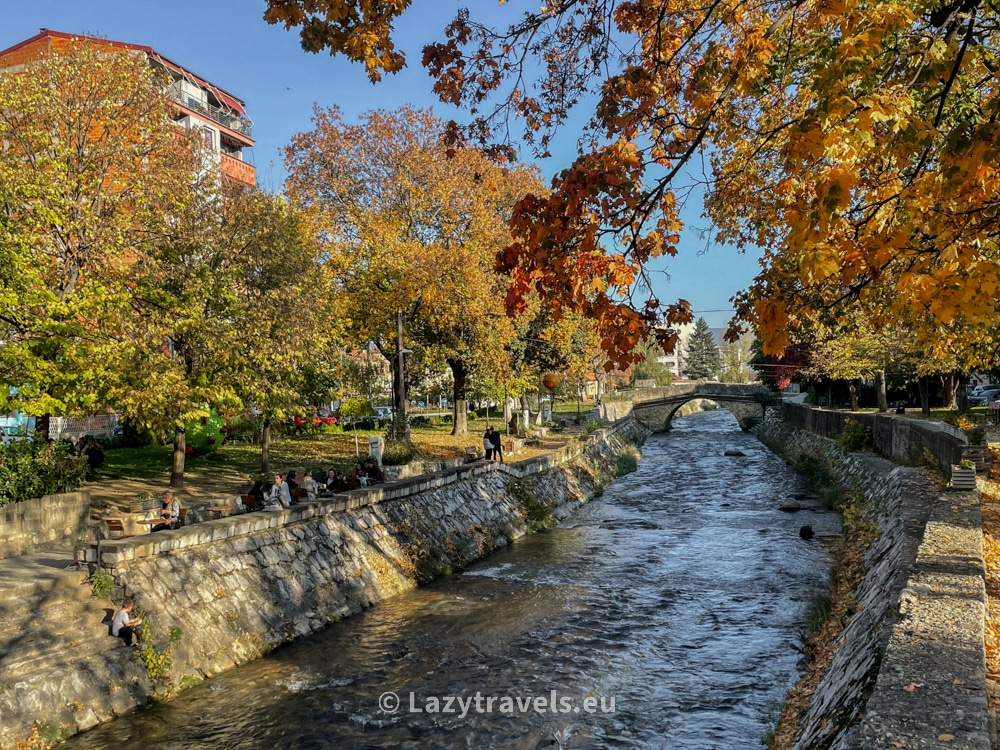
Getting to Tetovo
If you don’t have a car, getting to Tetovo won’t be any trouble. There are buses from Skopje every two hours or so. Ride takes about 50 minutes. Then it’s another 1.5 kilometres of walking and you’ll be at Tetovo’s biggest attraction. And this is where the magic begins to happen.
Important: if you will be taking a through bus from Ohrid to Skopje, the bus does not arrive at the bus station, but stops at the highway. From there you will still have a 4km walk to the city. Take this into consideration when planning your trip!

